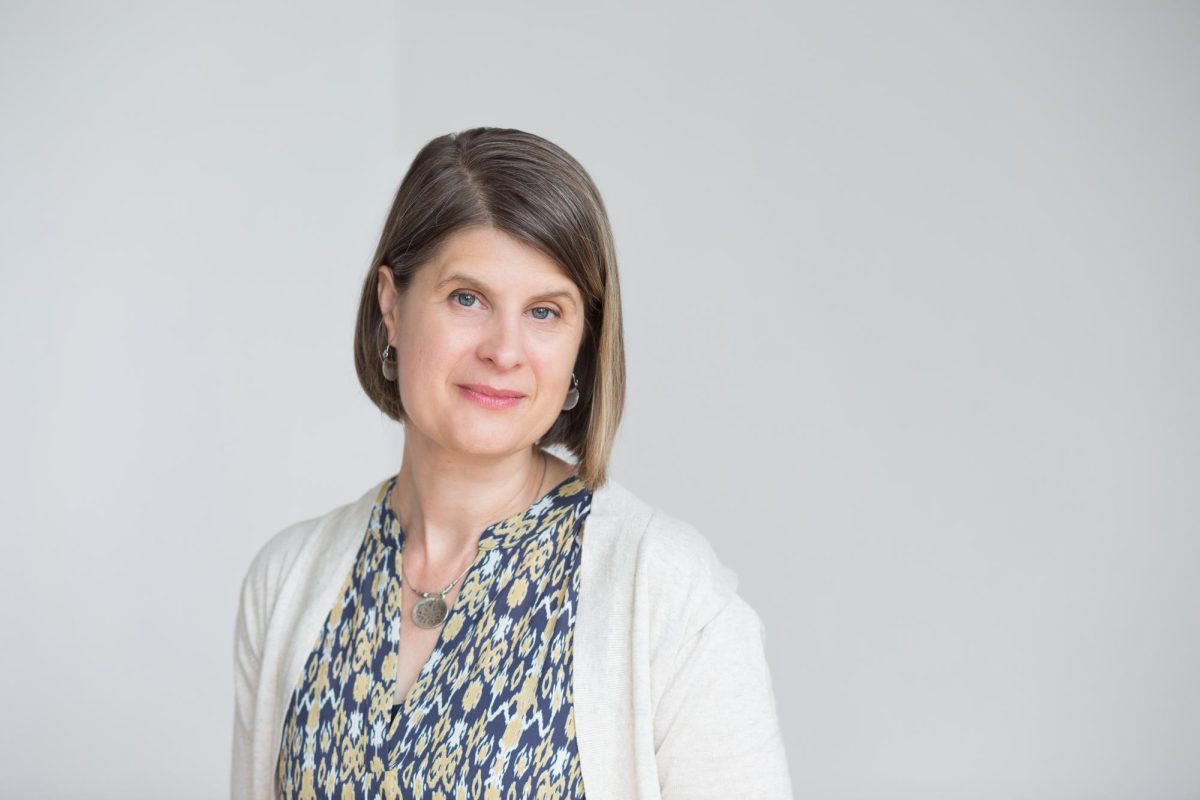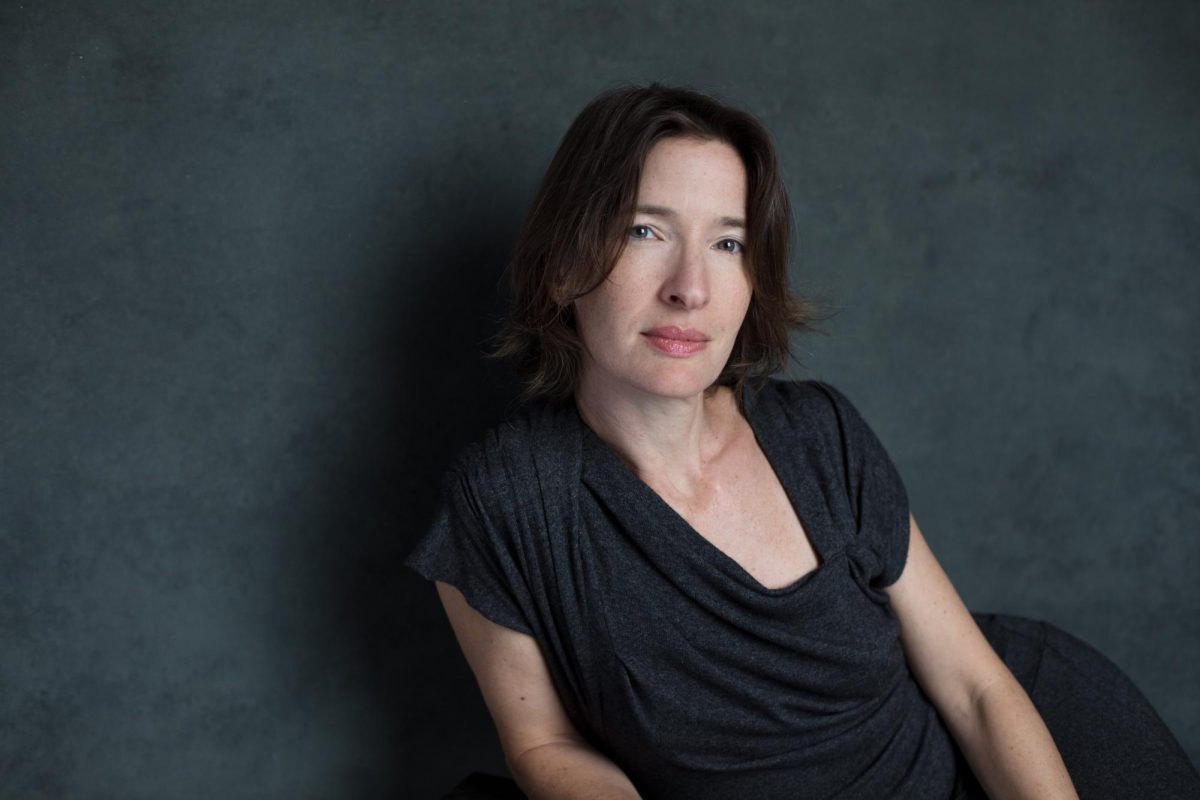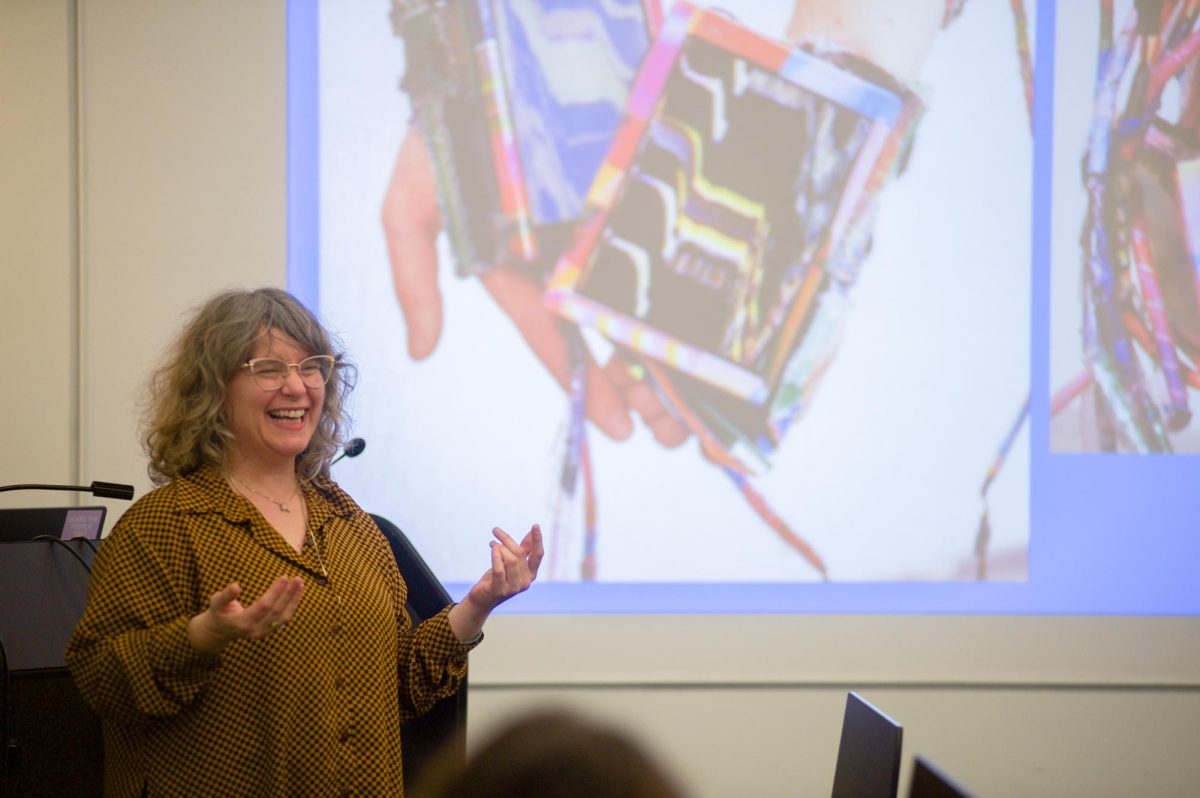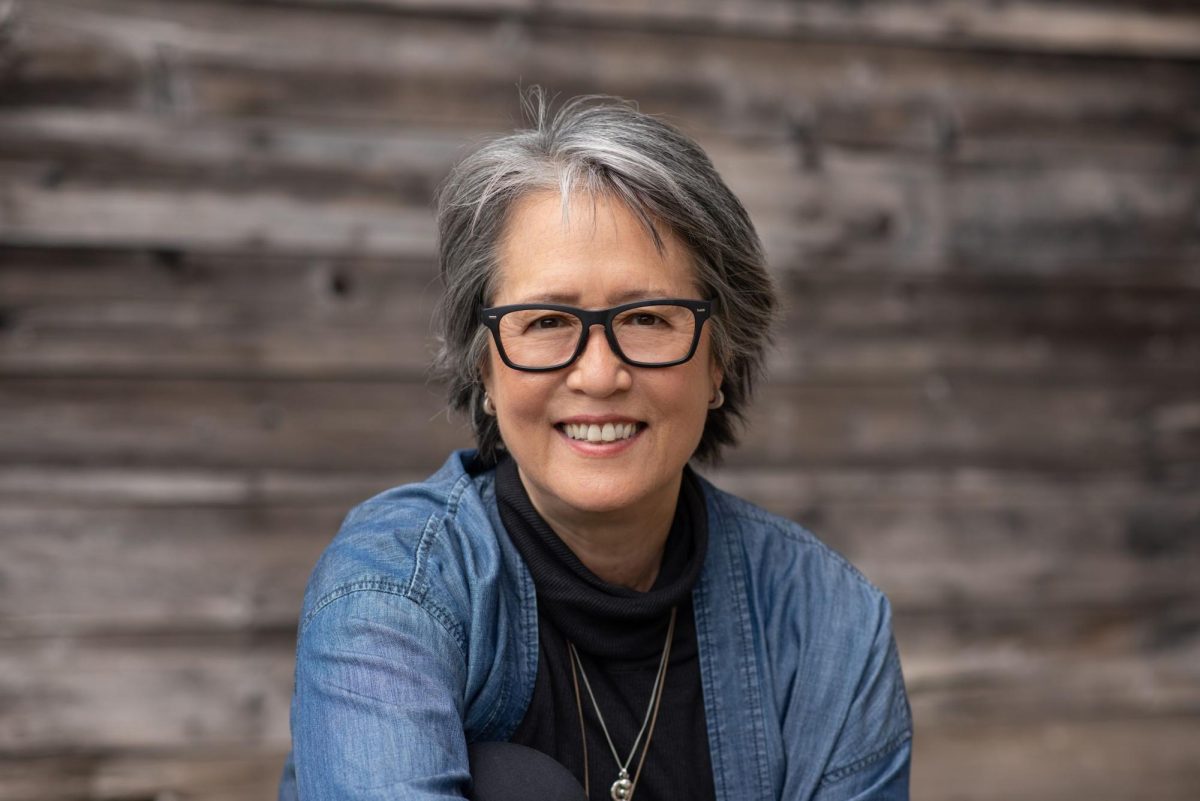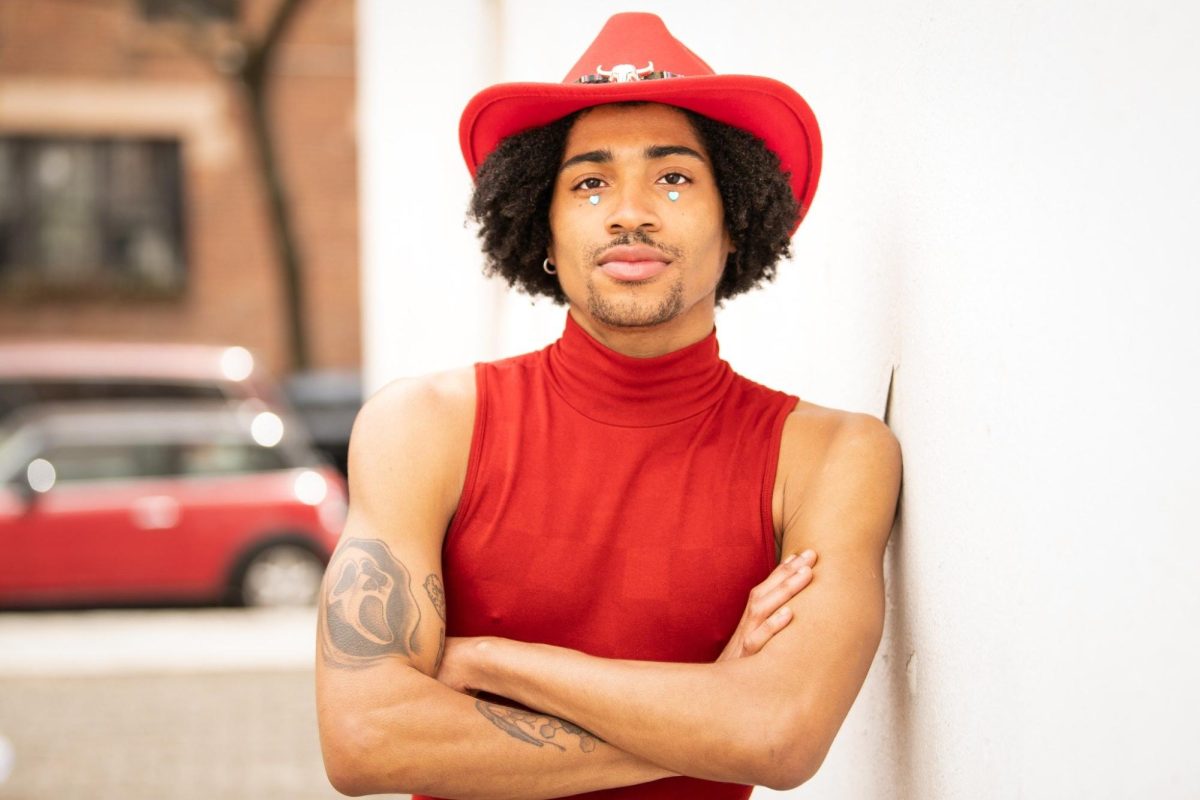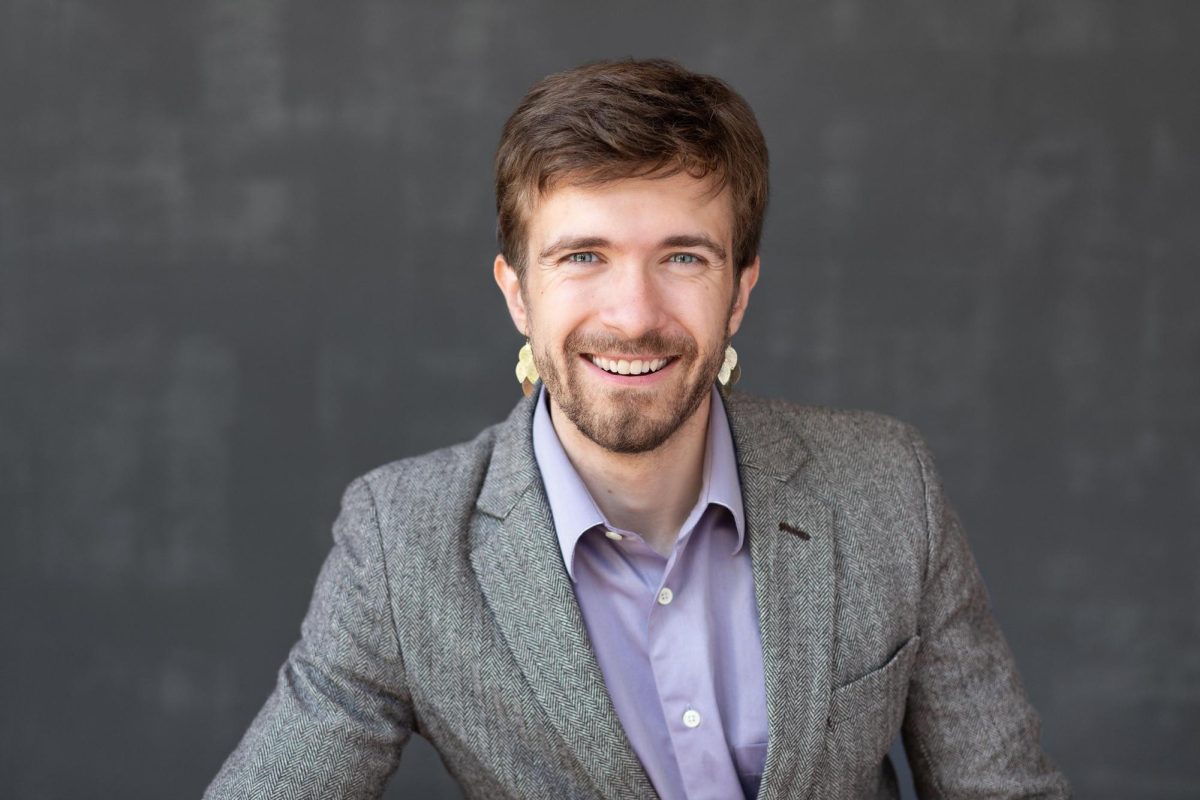Laura Carlson-Tarantowski is a renowned scenic director and is a scenic designer and lecturer in Theater at Oberlin. She is in the midst of construction for the upcoming production of L’Orfeo, and talks about process, journey, and collaboration.
This interview has been edited for length and clarity.
What brought you into theater and scenic design in the first place?
I started off in college most interested in illustration, and I just wandered into the theater. I had a friend who was cast in a show, and I got to go backstage and see what they were doing. They were building the set, and I saw a scale model that they were building off of, and I was very taken by that. It was exciting to me to see a lot of the different skills that I used and like to do. I’ve always liked to make things as well as draw and paint. Being able to take it one step further off of the page and see it come to life was really exciting, and I kind of knew right away that’s what I wanted to do once I was exposed to it.
Looking at your most recent shows, Albert Herring and Pipeline, these are very different pieces thematically and stylistically. How do you approach such different shows?
The shows are always very different, so they’re the same in that way, but the process tends to be pretty similar. It always starts with the script. I try to approach the script by just reading it for enjoyment to see what I pull out of it that way. Then I talk with the director. We go back through the script many times, noting all of the moments when the set might interact with the action, what we need to do to tell the story. Then we do a lot of research, we do a lot of sketches. It’s a long process of collaboration. So, it might be three or four months, sometimes longer, when we get the chance. And it’s not just the scenic designer, of course. It’s costumes, lighting, and a lot of other collaborators and factors that go into creating the design.
Is there a significant difference in doing something with a more traditional text as opposed to something more music-oriented like an opera?
Opera has a certain scale to it. It’s elevated. There are a lot of expectations of spectacle that go with opera. The beauty and the grandeur of the music often demands similar gestures. And there’s frequently a historical aspect to the way the show has been done in the past and the way the director wants to do it this time. Operas are bigger, and they have bigger budgets.
What’s your favorite thing you’ve worked on?
I honestly don’t have a favorite, which I’m glad about because if you did have a favorite then how would you keep going? I can say I don’t have favorite scripts, but what endears me to a project is usually the people that I’m working with. So, sometimes you just get a uniquely wonderful team of people with a director who has a really strong vision for the work, and then we come up with something that I wouldn’t have thought up by myself. That’s when it’s most exciting.
Is there anything you have going on now that you want to talk about? Any new productions here?
We’re right in the middle of the spring opera, L’Orfeo. They’re gonna be starting on stage Saturday, so we’re kind of in the big crunch of that right now. It opens in about two weeks. So right now, that’s blotting out everything else. But we also have a really exciting project coming up, called My Dead Boyfriend is a Robot, that our Visiting [Assistant] Professor [of Theater and Africana Studies] Preston Crowder, OC ’16, has written and is in the process of writing with a class. We’ve got students that are working on the set design for that, and it’s going to be maybe-not-fully produced because it’s still in process, but it’s going to be an “elevated reading.” So, we’re going to have visual elements and lighting and things like that, but not a full set the way it might be once the play is completely developed. I’m excited to see how that develops.
Is there anything else you want to share about working as a scenic designer or about theater at Oberlin?
I just encourage students: if you’re interested in visual arts and or theater, you don’t have to be a Theater major to come and work in our shops, take the classes, design shows, especially in the Kander Theater. We do a lot of capstone projects that students design, and you don’t need to have a lot of experience to do that.


